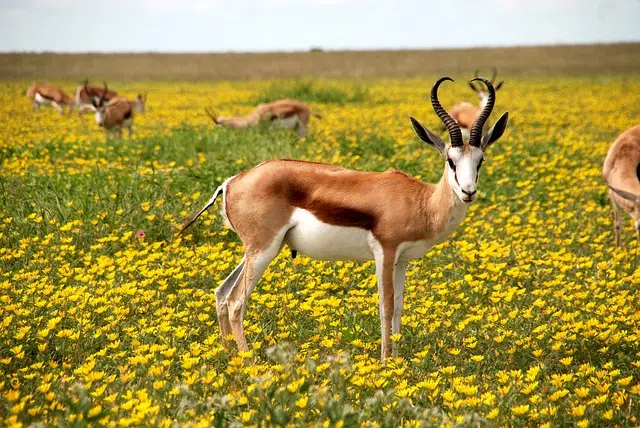
Fauna and flora constitute the biotic factors of an ecosystem.
Biotic refers to that which is characteristic of living organisms or that maintains a link with them. It can also be that which belongs to or is associated with biota , a concept that allows naming the fauna and flora of a certain territory.
Abiotic , on the other hand, refers to the environment in which life cannot develop; It is the opposite term to biotic, since it names what is not included or is not a product of living beings.
The biotic factors
The biotic factors that are part of an ecosystem are the fauna and flora . They include all beings that have life, be they plants, bacteria, animals, and the products of these organisms. Abiotic factors , for their part, appear due to the action of the chemical and physical components of the environment ( air , water , soil , sun ).
For example: cows, horses and goats, which belong to the biotic group, coexist in the same ecosystem, which can be a field . For their subsistence, they need different abiotic factors, such as air and water.
Nutritional additives
It should be noted that probiotic elements are certain components that are used when producing foods such as sausages or dairy products, with the aim of adding beneficial properties and increasing quality. Probiotic additions contain bacteria that are beneficial to the body.
We can mention, on the other hand, that the biotic field is the electrodynamic field that is linked to the biomembranes existing in the chloroplasts and mitochondria of eukaryotic cells and also in various regions of prokaryotic cells .

An antibiotic is a compound that eliminates or inhibits the development of infectious organisms.
Macrobiotic diet
Like so many other social trends, macrobiotic nutrition is a concept that was born from Eastern culture. In this case, it is based on the principle of Yin and Yang , and proposes that there is always a balance between these two forces, which present a different proportion in each case .
Applied to food, we talk about the balance between sodium and potassium , and it is established that to achieve a balance it is necessary to consume one unit of the latter for every five of the former. During digestion, ingested food is broken down to extract molecular elements that are then introduced into the blood. The purpose of this lifestyle is to collaborate with the assimilation process, to prevent the body from becoming fatigued, which can lead to illness.
Returning to Yin and Yang, foods are classified into two groups, to facilitate a balanced choice, trying to respect the 5 to 1 ratio defined above. There are two processes that seek to balance meals: yanguization , to eliminate excess Yin, which is achieved through cooking, adding salt, etc.; and yinization , from fermentation or maceration, among other techniques.
Antibiotics
Antibiotics are those chemical compounds that are used to eliminate or inhibit the development of infectious organisms. They all share the property of selective toxicity , that is, higher when facing invading entities than against animals or human beings. Among the best-known antibiotics are penicillin , which has been used in the treatment of infectious diseases such as syphilis and tetanus, and streptomycin, useful against tuberculosis.
Originally, the word antibiotic was used as a synonym for organic compounds from bacteria and fungi that were toxic to other living beings. Currently, it also refers to synthetic or semi-synthetic products. Among the categories in which these drugs can be classified are antibacterials, antimalarials, antivirals and antiprotozoa.
